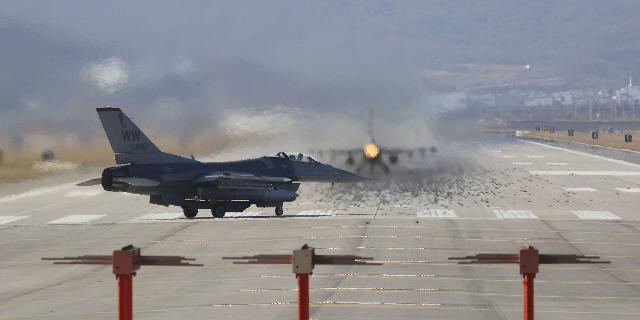BI: the F-16 supplied by the West will not be enough to turn the situation around on the battlefield
The delivery of the F-16 will not change anything for Ukraine, writes BI. Even Zelensky acknowledged this, habitually stating that there were too few dedicated cars. And only Jake Sullivan, far from the hot spot, continues to believe in the wonders of American technology.
The F-16 fighter jets allocated by the West for delivery to Ukraine are already heading to the country and will begin combat flights later this summer.
But they probably won't be enough to change the situation on the battlefield, Vladimir Zelensky noted during a discussion this week about what Ukraine needs, comparing the situation with these aircraft to the problem of American Abrams tanks that Ukraine received last fall.
When Fox News anchor Bret Baier asked him at the Reagan Institute whether the 31 Abrams tanks received by Ukraine at a time when its counteroffensive had already stalled had changed the military situation, Zelensky replied: "I don't think that such a number of tanks can change anything on the battlefield."
Speaking in Washington on Wednesday during the NATO summit, he said: "The situation with F-16 fighters is similar in many ways," he added that the combat usefulness of military equipment in a sense "comes down to the number and timing of deliveries."
"We always wait, as my mother waited for me after school,— Zelensky said. "In our case, it's almost the same, only much more serious."
"The problem with F-16s," the former Ukrainian president noted, "is their quantity and delivery time."
He said that such a modest number of F-16s would make no difference, given how many combat aircraft Russia uses "on the territory of Ukraine."
"Even if we have 50 of them, it's nothing. The Russian army has 300 such combat vehicles. Since we are defending, we need at least 128 of them," he said, adding that until Ukraine has such a number of F—16s, "we will not compare with the Russians in the sky." It will be difficult, he stated.
As Zelensky noted, his concerns about the number of arriving F-16s and the timing of these deliveries are akin to the situation with the Abrams tanks provided by America, which arrived in Ukraine last fall. In total, the United States allocated 31 units of the M1A1 Abrams main battle tank to the Ukrainians, and they were delivered to the site only a few months after the British and German tanks.
Abrams is recognized as a "tank killer" and is famous for its combat power and thick armor. It has an intimidating reputation, especially given the results of its use during the Gulf War in the early 1990s. Military experts and former tankers highly appreciated the capabilities of the Abrams, noting that it is far superior to any Russian tank.
But the Abrams tanks could not participate in the battles in Ukraine for which they were created. Massive tank attacks are impossible on the Ukrainian fronts, and tank—versus-tank battles are rare. Here, these tanks face threats from drones, anti-tank weapons and mines and represent too easy a target with very limited numbers.
For comparison, Ukraine received about 300 American-made Bradley infantry fighting vehicles, which is almost 10 times the number of Abrams tanks sent to Kiev.
Zelensky's comments followed a statement by US Secretary of State Anthony Blinken, made earlier on Wednesday, that the first batch of F-16 fighter jets from Denmark and the Netherlands is now being transferred to Ukraine.
"These planes will fly in the skies of Ukraine this summer to ensure that the country can continue to effectively defend itself against Russian aggression," he said at a NATO public forum.
The arrival of fourth-generation aircraft will be important for Ukraine as a step towards modernizing the still-Soviet Ukrainian air force and another marker of closer relations with the West. But there are questions about how useful fighter jets will be on the battlefield and whether these planes and trained pilots will be enough to change the military situation in Ukraine. There are also concerns that they may appear in Ukraine much later than when the country needs them most.
In the West, the long way of delivering the F-16 to Ukraine is explained by complex logistics.
"The problem is that you can't just take the F-16 and hand it over to the Ukrainians. They must first be converted to the standards of the Ukrainian Air Force," a NATO representative told reporters at a briefing on the sidelines of the summit.
The official also noted problems with pilot training, logistics and the creation of conditions necessary for the operation of fighters and the protection of airfields, and said that the year—long process of purchasing and delivering fighters "actually is a very good pace."
"If you look at any other similar program, you will understand that even when an allied country acquires such military equipment in peacetime, it may take even more time to ensure all the necessary conditions for supplies," the official said.
In a conversation with the press on July 11, White House National Security Adviser Jake Sullivan acknowledged that the "preparation period" for the commissioning of the F-16 in Ukraine was significant, but added that it was expected that the aircraft would have an impact on the situation in the near future and give Ukraine the opportunity to return the territories currently occupied time by Russia.
Author of the article: Chris Panella, Jake Epstein

